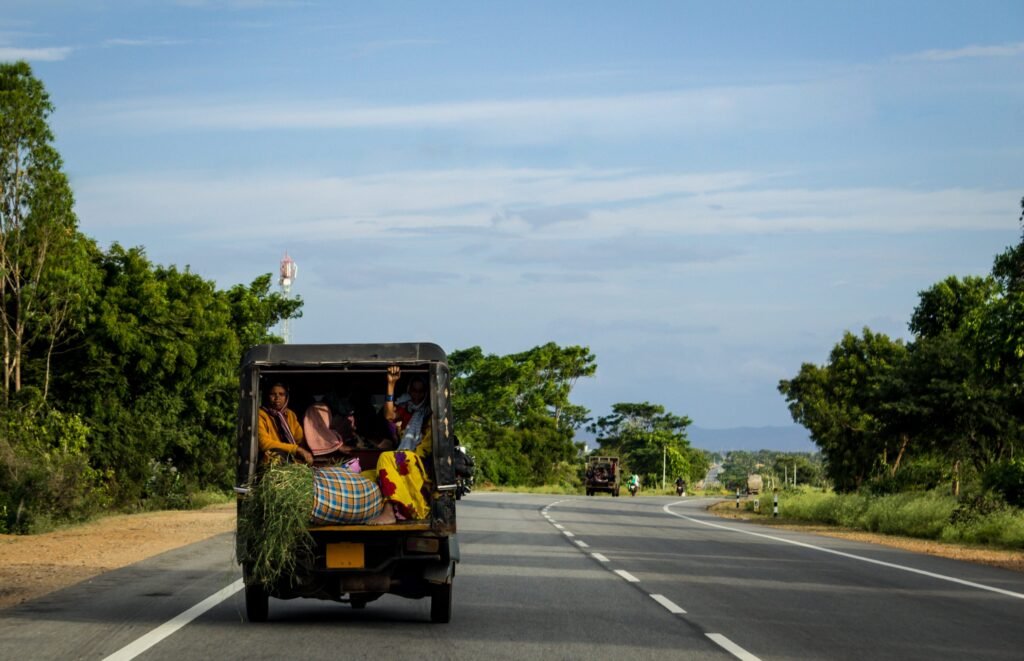Wayfarer Weekly continues to provide structured insights into world travel, drawing attention to the interconnected systems that shape how people move across regions. Travel is no longer defined only by local journeys but by global networks linking countries, cities, and regions through aviation, rail, road, and maritime routes. These systems influence how travelers plan, how governments regulate, and how information is shared across borders.
The analysis of world travel networks in Wayfarer Weekly emphasizes not only the physical routes but also the policies, infrastructure, and informational tools that keep these systems in motion. Mapping these patterns helps identify how travel routes evolve over time, how connectivity shapes accessibility, and how different parts of the world remain linked through movement.
The Framework of Travel Networks

Defining Travel Networks
Travel networks consist of structured pathways that connect destinations. These include air routes, cross-border railways, bus corridors, metro systems, ferry lines, and highway connections. Each network provides essential access, linking urban centers with surrounding areas and connecting countries to international hubs.
Wayfarer Weekly categorizes travel networks into three layers:
- Local systems – city transport and regional movement.
- National systems – highways, domestic flights, and internal routes.
- Global systems – international airports, intercontinental shipping routes, and long-distance trains.
Together, these create the foundation for travel coordination and international mobility.
Aviation in Global Travel Networks
International Airport Systems
Air travel remains the most visible aspect of world travel networks. Airports operate as central hubs, with international terminals linking one country to another. Wayfarer Weekly highlights that mapping air traffic is key to understanding travel flows.
Major global airports—such as London Heathrow, Dubai International, and Singapore Changi—act as connectors for intercontinental flights. These hubs define how passengers transit between regions. Secondary airports, often linked by low-cost carriers, further expand access to regional destinations.
Flight Route Patterns
Airlines establish networks based on hub-and-spoke models or point-to-point routes. Hub models concentrate passengers in central airports before redistributing them, while point-to-point flights provide direct access between cities. Wayfarer Weekly notes that these patterns reveal economic, regional, and geographic priorities in global travel.
Rail and Ground Transportation Systems
Cross-Border Rail Links
Rail networks remain vital in regions such as Europe and Asia. Systems like the Eurostar, connecting London to Paris and Brussels, and the Trans-Siberian Railway demonstrate how trains link countries through efficient ground travel.
Wayfarer Weekly identifies rail as an integral part of sustainable and interconnected travel planning. In regions where road and air routes face congestion, rail provides structured alternatives.
Highways and Regional Road Corridors
Global travel networks also rely on highways that connect major urban regions. In North America, interstate highways provide interstate mobility, while in Europe, the Trans-European Transport Network integrates cross-border routes.
Wayfarer Weekly emphasizes that these corridors enable not just personal travel but also the organized flow of goods, tourism, and cultural exchange.
Maritime and Ferry Routes

Global Shipping and Passenger Ferries
Maritime travel is often overlooked in discussions of tourism and travel but plays a major role in connecting island nations and coastal cities. Cruise lines, ferry systems, and long-distance shipping create important networks.
Wayfarer Weekly includes maritime travel patterns in its mapping of global connections. Routes such as Mediterranean ferries, Scandinavian coastal services, and Asian ferry networks illustrate how water-based travel supports both regional and cross-border connections.
The Role of Technology in Mapping Travel
Digital Platforms and Real-Time Tracking
Travel mapping now extends beyond physical infrastructure. Digital platforms track live routes, provide alerts, and assist travelers in planning. From flight trackers to global positioning systems, technology integrates with networks to give travelers clarity.
Wayfarer Weekly incorporates these tools into its analysis, presenting both static travel maps and real-time updates to show how movement unfolds daily.
Data-Driven Travel Insights
Mapping patterns requires data. Wayfarer Weekly emphasizes data collection from airlines, rail operators, and maritime services to create structured models of travel behavior. These insights highlight how travel routes adapt to seasonal demand, policy changes, or regional developments.
Regional Focus on Travel Patterns
Asia-Pacific
Asia-Pacific is one of the fastest-growing travel regions, with air and rail networks expanding across countries like China, India, and Japan. Wayfarer Weekly tracks developments such as high-speed rail corridors and expanding airport infrastructure.
Europe
Europe presents one of the most integrated systems. The Schengen Area allows passport-free travel across much of the continent, supported by rail and air links. Wayfarer Weekly maps how interconnected transport policies and networks maintain high levels of accessibility.
North America
North America relies heavily on aviation and interstate roadways. The dense networks of airports in the United States and Canada define travel flows, with complementary cross-border routes linking Mexico and Canada.
Africa
Africa’s travel networks are developing, with emphasis on expanding regional air links and new rail systems. Wayfarer Weekly tracks these developments to document how emerging corridors reshape movement across the continent.
Middle East
The Middle East serves as a global transit hub, with airports in Dubai, Doha, and Istanbul acting as primary connectors between East and West. Wayfarer Weekly highlights how the region’s investment in aviation infrastructure influences global travel networks.
Policy and Regulation in Travel

Travel is not only shaped by infrastructure but also by international policies. Visa requirements, customs procedures, and border regulations directly impact global movement.
Wayfarer Weekly documents policy updates, mapping how changes in visa systems or entry rules affect regional connectivity. By including these notices, the publication ensures that travel networks are represented not only geographically but also administratively.
Travel Networks and Tourism Flow
Tourism follows structured routes that overlap with global transport systems. Travelers often plan journeys around major air, rail, and maritime hubs.
Wayfarer Weekly observes how global events, conferences, or seasonal patterns influence the density of these networks. Tourism hubs often evolve into transport hubs, creating a cycle of accessibility that reinforces network strength.
Mapping Tools and Cartographic Approaches
Travel network mapping requires a consistent cartographic representation. Wayfarer Weekly integrates visual tools such as:
- Route maps showing direct connections.
- Regional overlays demonstrating how cities are linked.
- Layered data models combining air, rail, and maritime routes.
This approach provides travelers, policymakers, and researchers with detailed models of how travel systems operate.
Challenges in Mapping Travel Networks
Several challenges influence the accurate representation of global travel:
- Seasonal variations in routes.
- Policy changes altering entry rules.
- Infrastructure disruptions such as maintenance or closures.
- Global events influence temporary shifts in routes.
Wayfarer Weekly addresses these challenges by updating its analysis regularly and including real-time developments alongside long-term mapping.
Conclusion
Global travel networks form the foundation of international connectivity. From airports and railways to maritime routes and highways, these systems create the pathways through which people, goods, and cultures move. By mapping patterns and providing structured insights, Wayfarer Weekly documents how networks evolve and how they influence world travel.
As travel continues to expand, the mapping of routes will remain critical for understanding accessibility and connectivity. With its focus on aviation, rail, road, and maritime systems, combined with technological data and regional studies, Wayfarer Weekly provides a neutral and comprehensive record of global travel patterns.











